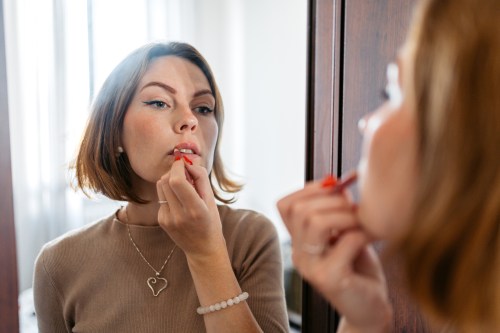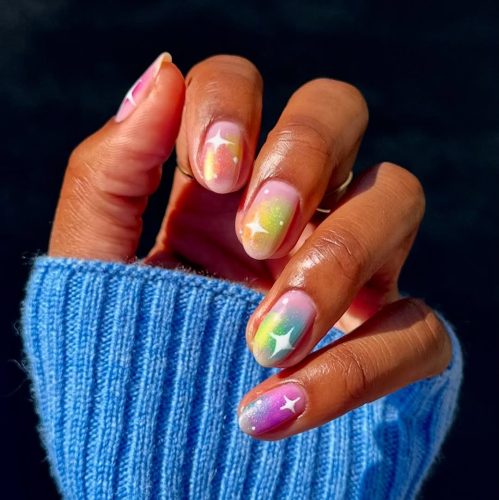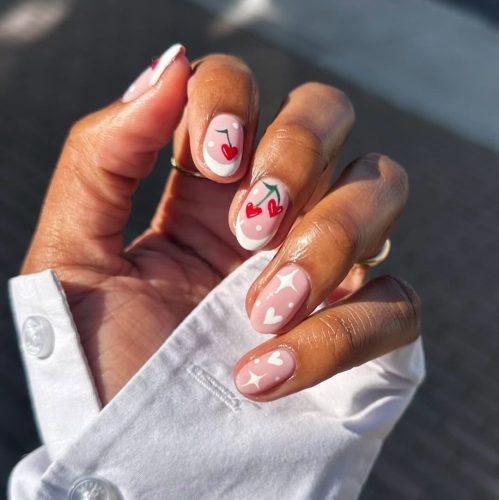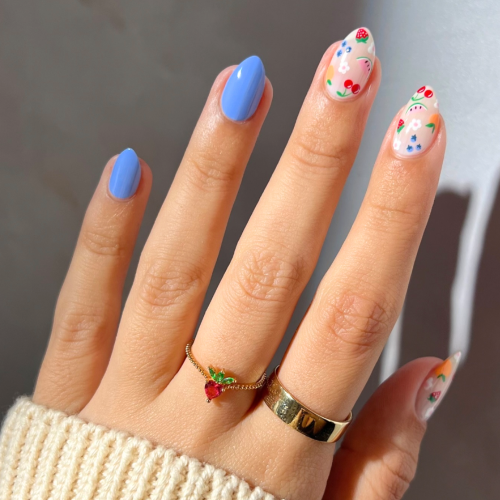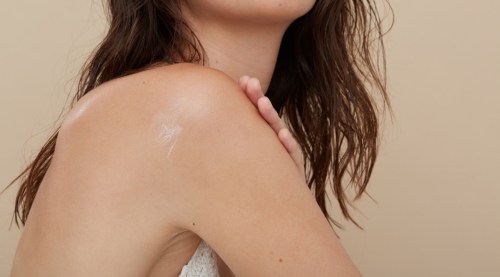‘I’m a Cosmetic Chemist, and This Is What Everyone Should Know About Mold in Their ‘Clean’ Beauty Products’
A cosmetic chemist and a plastic surgeon answer all of your most burning questions about mold in makeup and skin care.
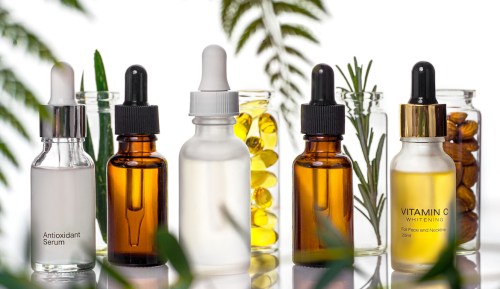
Like food, beauty products have a shelf life. Though your beloved moisturizer will hopefully last longer than a tub of yogurt, in due time, it will expire—which is something some users found out the hard way when they discovered mold in their Kosas concealers.
Experts in This Article
clean cosmetic chemist and founder of KKT Consultants
Over the last few weeks, the brand’s viral Revealer Concealer, $30 has been buzzing yet again, but this time, it isn’t because of its flawless coverage. Instead of people using it to copy Hailey Bieber’s aesthetic (it’s one of her favorites, after all), they’ve taken to social media to call out black spots and a blue cheese smell (aka: mold) in the tubes.
Understandably, this has left consumers with a lot of questions about why mold would show up in a beauty product, how big of a deal it is to put it on your skin, and how to stop it from happening to their own tubes of the stuff. So we asked experts to weigh in on it all. Keep reading for what they have to say.
Why would mold appear in a beauty product?
The truth is, mold spores are just about everywhere. “Think: anywhere that has moisture, is warm, and has ‘food’ for them to grow,” says Krupa Koestline, MD, a clean cosmetic chemist and founder of KKT Consultants. “Anytime the preservative system is compromised, whether it’s due to formulation or to manufacturing defects, mold can grow.” This isn’t unique to beauty products and can happen just about anywhere, including on your bread, in your bathroom, and even with your house plants.
Now, consider your beauty products, which are often repeatedly exposed to bacteria. While applying makeup and skin-care products, they naturally come in contact with our fingers and skin. “Our fingers and skin carry oils, bacteria and germs from the outside world so there is always a chance these antigens could spread into our beauty products,” says Konstantin Vasyukevich, MD, a board-certified facial plastic surgeon in New York City.
“Concealers and any makeup products that are used commonly and have high pigments can be hard to preserve properly,” adds Koestline. “Products that are in contact with your skin, like a concealer or lip gloss with a doe tip, can easily grow mold.”
This is true of all beauty products, but “clean” products, in particular, are more prone to the development of mold. Products that bill themselves as clean tend to forego traditional preservatives like parabens for natural alternatives (or none at all), and it’s the presence of those preservatives that help stave off those spores.
“It’s really important that we push people away from the idea of preservative-free,” Nneka Leiba, deputy director of research for the Environmental Working Group (EWG), previously told Well+Good. “What we really want to see is innovation and testing to find newer preservatives that are safer.”
For what it’s worth, according to Kosas’s website, the brand’s Revealer Concealer does contain “safe, effective, and antimicrobial stabilizers” to prevent mold, yeast, and pathogens. “We use these preservatives in our products to extend their shelf lives while maintaining our standard of next-level clean ingredients. All products must pass rigorous preservative efficacy testing in accordance with the USP 51 protocol by an independent analytical lab for us to bring a product to market,” the brand writes.
However, because “clean” preservatives typically don’t last as long as their synthetic counterparts (like parabens or phenoxyethanol), it’s extra-important to pay attention to expiration dates. For example, at least one person noted finding mold in their Revealer Concealer after a year, but the product is only meant to last for six months after opening.
“When formulating clean products, especially water-based formulas, a robust preservative system that has been thoroughly tested is more important than ever,” says Dr. Koestline. “While preservatives like sodium benzoate, a water-soluble salt, and potassium sorbate have shown good synergy and broad-spectrum effect when paired together, their strength and efficacy are affected by the formulation pH and electrolytes. That makes it very difficult to monitor and control over time.”
The takeaway here isn’t that you shouldn’t use cosmetics that call themselves clean (our beauty editors, at least, won’t be tossing their Kosas formulas), but instead that you should be cognizant of their shelf life. And beyond that, the best practices involved in making sure that shelf-life is as long as possible. (More on that later.)
How can you identify mold in cosmetics?
“Mold spores can be microscopic and virtually undetectable to the naked eye, or they can alter the texture of a formula, or they can even appear hairy or fuzzy,” says Dr. Koestline. “Sometimes you can smell the mold before seeing it—it can smell a little earthy or musky.” So you’ll want to watch out for changes in the texture, color, separation, or scent of your beauty products. If a product looks or smells off, it’s best to toss it.
Paying close attention to expiration dates (on all of your products, not just the clean ones) is also extremely important. They’re not just a suggestion, there’s real science behind them. You’ll notice the little jar icon on the back of your product or its original packaging noting a number and the letter “m”, indicating how many months it’s good for after opening and being exposed to air.
What are the dangers of mold in beauty products?
“Short-term risks include skin irritation and infection, especially for those with a compromised immune system or compromised skin barrier,” says Dr. Koestline. She notes some people can develop a rash or hives that become itchy, which can lead to swollen eyes from all that touching.
“Long-term exposure can affect your respiratory system, causing difficulties in breathing,” says Dr. Vasyukevich. In any case, if you have known exposure and are having a severe reaction, it is best to consult your dermatologist and doctor for next steps and care. Of course, toss those expired beauty products, too.
What steps can you take to avoid your exposure to mold in cosmetics?
1. Pay attention to expiration dates
Some beauty products expire within one year of opening. Other cosmetic products, like mascaras and eyeliners, that come into contact with your eyes usually have a six-month expiration. You can always check the packaging, which will note the expiration timeline given each formulation is different.
2. Be mindful of the way your products are packaged
The preservation of your makeup is based on ingredients and the formulation of the product. Now, we’re not all chemists; simply glancing at the ingredient list or Googling the basics of cosmetic testing won’t help much. However, taking note of how the products are packaged and how you’re using them on a daily basis is a good way to start. A great example of this is how products like vitamin c serums and toothpastes are packaged. Both of those products are light sensitive so you would never see (and should never see!) them in clear bottles or tubes.
3. Don’t share cosmetics
Remember when your mom told you to never share eye makeup? She said it for good reason! Sharing cosmetics with someone can double the bacteria exposure, and spread things like pink eye or pimple-causing bacteria. Sharing a moisturizer is likely fine if you’re using clean hands but it’s best to use your own mascara tube or trusted black liquid liner.
4. Wash your makeup brushes
It may seem like a chore, but washing your makeup brushes and beauty sponges every 7 to 10 days will benefit you in the long run. It will lessen the possibility of your products being exposed to bacteria and breakouts, and your brushes will last longer.
5. Avoid touching skin-care applicators to your face
Cocktailing your serums and facial oils should be done in your hands, not by directly touching their respective tinctures to your face. The same goes with any liquid makeup, you never want to touch the tinctures directly to your face where bacteria could be and then dip it back into the bottle for it to become a breeding ground for mold.
Sign Up for Our Daily Newsletter
Get all the latest in wellness, trends, food, fitness, beauty, and more delivered right to your inbox.
Got it, you've been added to our email list.
